Home>Interior Design>Flower Bed Ideas: Beautiful Ways To Create Floral Displays
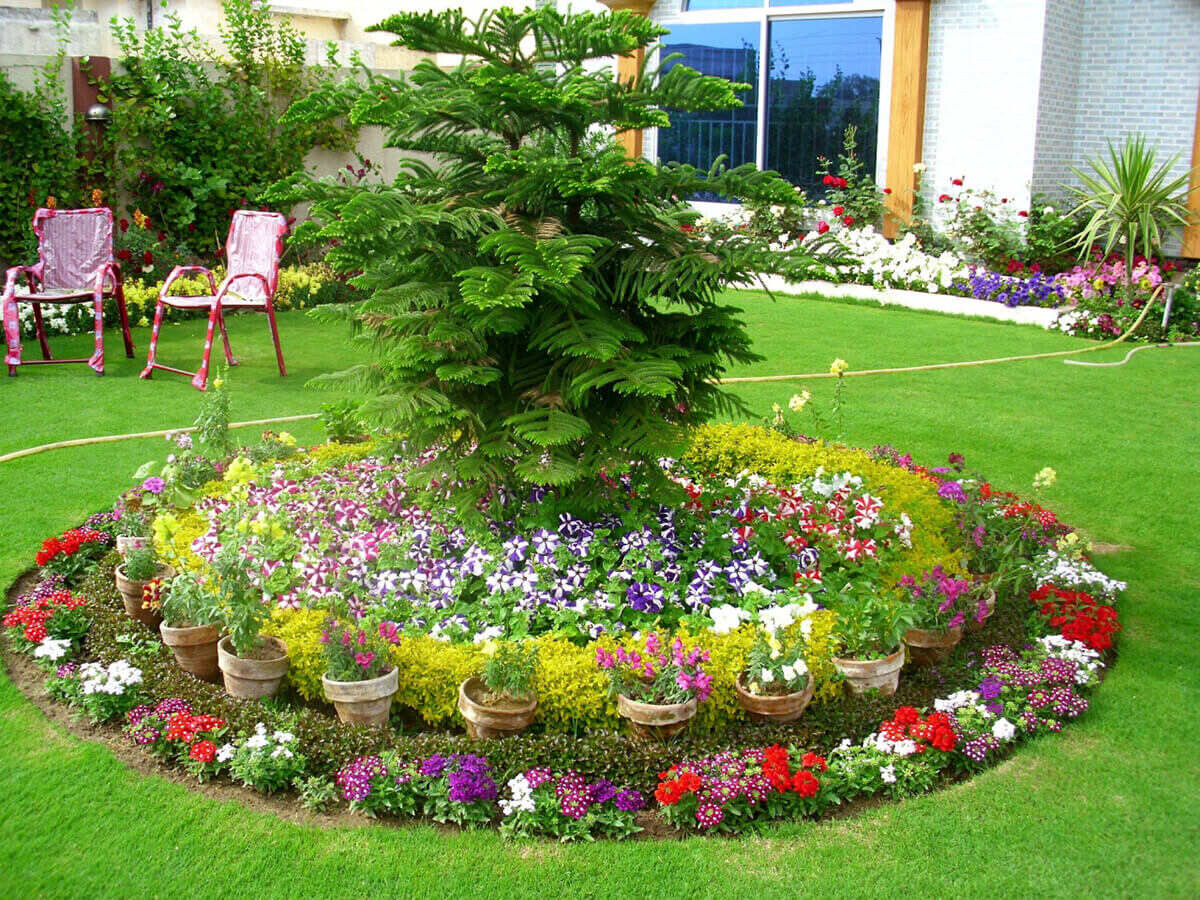

Interior Design
Flower Bed Ideas: Beautiful Ways To Create Floral Displays
Modified: February 26, 2024
Discover stunning flower bed ideas for creating beautiful floral displays in your interior design. Transform your space with these creative and inspiring tips!
(Many of the links in this article redirect to a specific reviewed product. Your purchase of these products through affiliate links helps to generate commission for Storables.com, at no extra cost. Learn more)
Flower bed ideas: Beautiful ways to create floral displays
Flower beds are a delightful addition to any garden or outdoor space. They add pops of color, fragrance, and beauty, creating a vibrant and inviting atmosphere. Whether you have a small balcony, a spacious backyard, or even just a window sill, there are numerous creative ways to create stunning flower displays. In this article, we will explore some beautiful flower bed ideas that will inspire you to transform your outdoor space into a floral paradise.
Key Takeaways:
- Create stunning floral displays with container, raised, perennial, annual, border, wildflower, or cottage garden beds. Unleash creativity, care for your flowers, and transform your outdoor space into a captivating oasis.
- Whether limited on space or seeking a natural, carefree vibe, flower beds offer endless possibilities. Experiment with different types, care for your flowers, and let the beauty of nature surround you.
Container flower beds
Container flower beds are perfect for those with limited space or for adding portable floral accents to your outdoor areas. By choosing the right containers and selecting the appropriate flowers, you can create captivating and versatile displays. Opt for containers that are lightweight, durable, and have adequate drainage. Consider using different sized containers to add depth and dimension to your flower bed. When selecting flowers, choose a variety of colors, heights, and textures to create an eye-catching arrangement. Place the containers strategically to create a visually appealing composition, and don’t forget to regularly water and fertilize your flowers to keep them healthy and vibrant.
Raised flower beds
Raised flower beds offer numerous benefits, such as better drainage, improved soil quality, and easier maintenance. To create a raised flower bed, first, choose a suitable location in your garden and prepare the area by removing any weeds or grass. Build a frame using wood or stones in the desired shape and size. Fill the raised bed with nutrient-rich soil and choose flowers that thrive in your climate and sunlight conditions. Consider planting a mix of perennials and annuals to enjoy a continuous bloom throughout the year. Remember to water and mulch your raised flower bed regularly to promote healthy growth.
Perennial flower beds
Perennial flower beds are a popular choice for their longevity and low maintenance. These beds consist of plants that come back year after year, creating a consistent and enduring display. When planning a perennial flower bed, consider the bloom time, height, and color palette of the flowers. Arrange the plants in a way that provides a balance of height and texture. To keep your perennial flower bed in top condition, provide proper irrigation, prune as needed, and apply fertilizer when required. With time, your perennial flower bed will establish a beautiful and self-sustaining ecosystem.
Annual flower beds
Annual flower beds are ideal for adding a burst of vibrant color and variety to your garden. These beds consist of plants that complete their lifecycle in one year. The advantage of annuals is the ability to experiment with different flowers and design styles each year. Choose annual flowers that suit your taste and the specific growing conditions of your area. Consider a mix of tall, medium, and low-growing flowers to create a visually appealing arrangement. Regularly deadhead and fertilize your annual flower bed to promote continuous blooming and prevent the plants from going to seed.
Read more: How To Create Floral Centerpieces
Border flower beds
Border flower beds are perfect for adding structure and definition to your garden. They are typically located around the edges of a garden bed, along pathways, or to outline specific areas. When selecting plants for border flower beds, consider their height and shape to create a seamless and visually pleasing border. Use a variety of flowers with different bloom times to enjoy continuous color throughout the seasons. Pay attention to color combinations and complementary foliage to create an aesthetically pleasing border that enhances the overall design of your garden.
Wildflower beds
Wildflower beds are a great way to introduce a natural and carefree element to your garden. These beds consist of native and wildflower species that attract pollinators and provide a habitat for beneficial insects. Before establishing a wildflower bed, clear the area of grass and competing plants. Choose a mix of native wildflowers that are suitable for your region and that bloom at different times. Allow the wildflowers to self-seed and spread naturally, providing a beautiful display year after year.
Cottage garden beds
Cottage garden beds are known for their romantic and nostalgic charm. These beds typically feature a mix of flowers, herbs, and sometimes even vegetables, creating a whimsical and relaxed atmosphere. To create a cottage garden bed, consider including traditional cottage garden flowers such as roses, lavender, delphiniums, and hollyhocks. Mix in herbs like rosemary, thyme, and sage, and even incorporate climbing vines and trellises for added visual interest. Cottage garden beds often have an informal layout and embrace a more natural and organic aesthetic.
With these flower bed ideas, you can unleash your creativity and create stunning floral displays that will transform your outdoor space into a captivating oasis. Whether you opt for container beds, raised beds, perennials, annuals, border beds, wildflowers, or a charming cottage garden, remember to care for your flowers with regular watering, pruning, and fertilization. Enjoy the beauty and tranquility that these floral displays bring to your home. Happy gardening!
Flower bed ideas: Beautiful ways to create floral displays
Flower beds are not just a means to add color and beauty to your outdoor space; they are a reflection of your personal style and a connection to nature. Whether you have a small balcony, a spacious backyard, or a dedicated garden area, flower beds offer endless possibilities to create stunning floral displays that will transform your space into a visual paradise.
Imagine stepping into your garden and being greeted by a kaleidoscope of colors, the delicate fragrance of blooming flowers, and the fluttering of butterflies and bees. Flower beds provide a canvas for creativity, allowing you to express your individuality and create a haven that brings joy and serenity.
In this article, we will explore various flower bed ideas that will inspire you to bring your outdoor space to life. Whether you prefer container flower beds, raised flower beds, perennial flower beds, annual flower beds, border flower beds, wildflower beds, or the enchanting charm of cottage garden beds, we’ve got you covered.
Container flower beds are perfect for those with limited space or for adding portable floral accents to your outdoor areas. With the right containers and plant selection, you can create versatile displays that can be easily moved and rearranged to suit your mood and changing seasons.
Raised flower beds not only provide aesthetic appeal but also offer practical benefits such as better drainage and improved soil quality. By elevating your flower beds, you can create focal points in your garden while enhancing plant growth and simplifying maintenance.
Perennial flower beds are a popular choice for those who prefer long-lasting blooms and minimal upkeep. By carefully selecting perennial flowers and designing your bed to accommodate their growth patterns, you can enjoy a beautiful display year after year with minimal effort.
If you’re looking to add bursts of vibrant color and variety to your garden, annual flower beds are the way to go. By experimenting with different annuals each year, you can create ever-changing displays that will keep your garden looking fresh and exciting.
Border flower beds are an excellent way to define and frame your garden, creating structure and visual interest. By choosing plants of varying heights and bloom times, you can design borders that complement your overall garden design and enhance its aesthetic appeal.
For a more natural, wild, and eco-friendly approach, wildflower beds are an excellent choice. These beds consist of native wildflowers that attract pollinators and provide habitat for local wildlife. Not only will you enjoy a beautiful display, but you’ll also be contributing to the preservation of local biodiversity.
Cottage garden beds evoke a sense of charm and nostalgia, reminiscent of whimsical countryside retreats. These beds feature a mix of flowers, herbs, and often even vegetables, creating a magical and romantic atmosphere that transports you to a simpler time.
With these flower bed ideas, the possibilities are limitless. Whether you have a green thumb or are just starting your gardening journey, creating stunning floral displays is within reach. So, grab your gardening tools, unleash your creativity, and let the beauty of flowers surround you. Happy gardening!
Key Takeaways:
- Create stunning floral displays with container, raised, perennial, annual, border, wildflower, or cottage garden beds. Unleash creativity, care for your flowers, and transform your outdoor space into a captivating oasis.
- Whether limited on space or seeking a natural, carefree vibe, flower beds offer endless possibilities. Experiment with different types, care for your flowers, and let the beauty of nature surround you.
Container flower beds
Container flower beds are a versatile and practical way to add floral beauty to any space, large or small. Whether you have a narrow balcony, a small patio, or even just a window sill, container flower beds allow you to showcase your favorite flowers and plants in a portable and customizable way.
Choosing the right containers
When it comes to choosing containers for your flower beds, consider both functionality and aesthetics. Opt for containers that are lightweight and easy to move, especially if you plan on rearranging your flower beds frequently. Additionally, ensure that your containers have adequate drainage to prevent waterlogging and root rot. You can find a wide range of containers in various materials, including plastic, ceramic, terracotta, or even repurposed objects like old buckets or wooden crates. Choose containers that complement your outdoor decor and personal style.
Selecting flowers for container beds
When selecting flowers for your container beds, consider the specific growing conditions of your space, including light exposure, temperature, and wind conditions. Choose flowers that are suitable for the size of your containers and their eventual growth patterns. Consider a mix of flower varieties, including trailing plants, tall statement flowers, and fillers to create depth and texture in your display. Opt for a color palette that suits your preferences and the overall ambiance of your space. Be sure to research the care and maintenance requirements of each flower variety to ensure successful growth.
Designing and arranging container flower beds
The design and arrangement of your container flower beds play a crucial role in creating visually appealing displays. Consider the height, size, and growth habits of the flowers you choose. Place taller plants towards the back or center of the container and shorter plants towards the front or edges. This will create a dynamic and layered effect. Consider using varying heights and colors to add interest and create focal points. If you have multiple containers, try grouping them together to create a cohesive and lush display. Experiment with different textures and shapes to create a visually pleasing composition.
When caring for your container flower beds, be mindful of their watering needs. Containers tend to dry out faster than traditional garden beds, especially in hot weather. Regularly monitor the moisture level of the soil and water accordingly. Fertilize your container plants as needed, following the instructions on the fertilizer package. Additionally, remove dead or wilted flowers to encourage continuous blooms and keep your display looking fresh.
Container flower beds offer endless possibilities for creativity and flexibility. With the right containers, flower selection, and design, you can create stunning displays that brighten up any outdoor space. Whether you choose a single container filled with your favorite blooms or a collection of containers for a vibrant and dynamic arrangement, container flower beds allow you to showcase your love for flowers in a way that suits your individual style.
Raised flower beds
Raised flower beds not only add visual appeal to your garden but also offer numerous practical benefits. They provide better drainage, improved soil quality, and easier maintenance. Raised beds are an excellent option for both experienced and novice gardeners, as they offer a controlled and optimized environment for your plants to thrive.
Benefits of raised flower beds
One of the significant advantages of raised flower beds is the improved drainage they provide. The elevated structure allows excess water to drain more effectively, preventing waterlogging and root rot. Raised beds also provide a barrier against pests and weeds, reducing the likelihood of infestations and making maintenance easier. Additionally, the soil in raised beds tends to warm up faster in spring, allowing for earlier planting and extending the growing season. These beds also provide better control over soil quality, allowing you to amend and customize the soil to suit your plants’ specific needs.
Preparing the area for a raised flower bed
Before you can establish a raised flower bed, you need to prepare the area where it will be located. Begin by clearing the chosen area of any grass, weeds, or debris. Use a shovel or a garden tiller to loosen the soil and remove any large rocks or roots. Level the area and ensure it is free from any drainage issues. Consider installing a weed barrier fabric to prevent weed growth from the ground below. Once the area is prepared, assemble the raised bed structure using materials such as wood, bricks, or stone, ensuring it is sturdy and level.
Selecting the perfect flowers for raised beds
Selecting the right flowers for raised beds is essential to ensure successful growth and a beautiful display. Consider the specific growing conditions of your raised bed, including sunlight exposure and soil type. Choose flowers that are suitable for these conditions, taking into account their height, spread, and water requirements. For vibrant and visually striking displays, mix flowers of different colors, textures, and blooming times. Opt for a combination of annuals and perennials to enjoy a variety of blooms throughout the seasons. Research the optimal spacing between plants to avoid overcrowding and promote healthy growth.
When caring for your raised flower beds, regular watering is important, as the elevated position may cause the soil to dry out more quickly. It’s crucial to monitor the moisture level and water when necessary, ensuring thorough penetration of water to the roots. Mulching the surface of the raised bed can help retain moisture and suppress weed growth. Additionally, periodically check the soil quality and amend it as needed with organic matter or fertilizers to maintain a nutrient-rich environment for your plants.
Raised flower beds offer not only aesthetic appeal but also practical advantages for successful gardening. The benefits of improved drainage, customizable soil quality, and easier maintenance make raised beds a popular choice for flower enthusiasts. With proper preparation and the right flower selection, your raised flower beds will become a beautiful and thriving oasis in your garden.
Perennial flower beds
Perennial flower beds offer a myriad of advantages for gardeners who desire long-lasting beauty and minimal maintenance. These beds consist of plants that come back year after year, providing a sustainable and enduring display that brings joy and color to your garden. With careful planning, design, and maintenance, perennial flower beds can become a mainstay in your outdoor space.
Advantages of perennial flower beds
One of the significant advantages of perennial flower beds is their longevity. Unlike annuals, which complete their lifecycle within one growing season, perennial plants continue to bloom and add beauty to your garden year after year. This means that once established, your perennial flower beds require less effort and expense in terms of replanting each season. Perennials also have well-developed root systems, allowing them to be more resilient to fluctuations in weather conditions.
Planning and designing perennial beds
When planning and designing your perennial flower beds, consider factors such as bloom time, height, color palette, and plant spacing. To achieve continuous blooms throughout the year, select a mix of perennials with different flowering seasons. Include plants of varying heights to create visual interest and depth in your bed. Incorporate a color palette that complements the overall aesthetic of your garden and harmonizes with surrounding plants. Pay attention to the growth habits of the perennials and allow sufficient space for them to spread and fill out the bed. Consider adding complementary foliage plants to enhance the overall structure and texture of the bed.
Maintaining and caring for perennial flower beds
The maintenance and care of perennial flower beds are relatively low compared to other types of flower beds. However, some regular upkeep is still necessary to keep your beds looking their best. Water your perennials adequately, especially during dry spells, and ensure the soil is well-drained. It’s important to monitor for pests and diseases and treat them promptly to prevent the spread and damage to plants. Deadheading spent blooms will not only enhance the appearance of your beds but also encourage continued blooming. Prune back leggy or overgrown plants as needed to maintain their shape and size. Divide overcrowded perennials every few years to rejuvenate their growth and maintain their health.
Additionally, it’s important to provide proper nutrition to your perennial flower beds. Before planting, ensure that the soil is well-amended with organic matter, which will provide essential nutrients for the plants. Consider top-dressing with compost or applying slow-release fertilizer to ensure continued nourishment throughout the growing season. Mulching the bed can help retain moisture, suppress weed growth, and provide insulation to the roots during extreme temperatures.
Overall, perennial flower beds offer a plethora of benefits, including long-lasting blooms, reduced maintenance, and an established and cohesive aesthetic. By carefully planning, designing, and maintaining your perennial beds, you can enjoy a beautiful and sustainable display that brings joy and color to your garden year after year.
Annual flower beds
Annual flower beds are a popular choice for gardeners who want to add bursts of vibrant color and variety to their outdoor space. These beds consist of plants that complete their lifecycle within one growing season, providing a constantly changing and dynamic display. With the right selection, arrangement, and maintenance, annual flower beds can transform your garden into a veritable floral paradise.
Benefits of annual flower beds
One of the significant benefits of annual flower beds is their ability to offer endless possibilities for experimentation and creativity. Unlike perennial plants, annuals provide an opportunity to try out new colors, textures, and varieties each year. This means you can constantly reinvent your garden and experiment with different design styles to suit your unique tastes. Additionally, annuals tend to have longer blooming periods compared to many perennials, ensuring a consistent and abundant display throughout the growing season.
Selecting the right annual flowers
When selecting annual flowers for your flower beds, consider several factors such as sunlight requirements, soil conditions, and climate. Choose flowers that are suitable for the specific growing conditions in your area. Consider the height and spread of the plants, ensuring they are appropriate for your desired display. Opt for a mix of colors, shapes, and bloom times to create an eye-catching arrangement. Carefully research each flower’s growth habit and maintenance requirements to ensure successful growth and long-lasting blooms.
Arranging and maintaining annual flower beds
The arrangement and maintenance of annual flower beds play a significant role in creating a visually stunning display. When arranging your annuals, consider varying heights and create layers to add depth and dimension to the bed. Place taller plants towards the back or center of the bed and shorter plants towards the front or edges. This will create a visually pleasing composition that allows each plant to shine. To achieve a cohesive look, choose complementary colors or create sections of harmonizing color palettes.
Maintaining annual flower beds requires regular care to keep them healthy and looking their best. Water your annuals adequately, keeping in mind their specific water requirements. It is essential to monitor the soil moisture and provide supplemental watering during dry periods. Deadhead spent blooms to encourage continuous blooming and prevent seed formation. Fertilize your annuals on a regular basis throughout the growing season, following the recommendations provided on the fertilizer package. Removing weeds promptly is crucial to prevent them from competing with your flowers for nutrients and water.
Proper spacing and regular pruning are essential for the overall health and appearance of your annual flower beds. Overcrowded plants can hinder airflow and lead to diseases, so ensure adequate spacing between each plant. Prune back leggy or overgrown plants to promote bushier growth and maintain an organized and well-balanced look. Applying a layer of organic mulch around the plants can help suppress weeds and retain moisture in the soil.
Annual flower beds offer an exciting and ever-changing display of colors and textures in your garden. By carefully selecting and arranging your annual flowers and providing regular maintenance, you can create a visually stunning and vibrant display that brings joy and beauty to your outdoor space.
Read more: How To Create Floral Centerpieces
Border flower beds
Border flower beds are a vital component of any well-designed garden. Positioned along the edges of various garden spaces such as pathways, fences, or even surrounding larger flower beds, border flower beds serve both a functional and aesthetic purpose. They create structure, define boundaries, and add layers of color and texture to your outdoor space, enhancing the overall visual appeal of your garden.
Importance of border flower beds
Border flower beds are essential for creating a sense of organization and structure in your garden. They act as a frame, outlining and defining different areas and pathways. By creating distinct borders, you can guide the flow of movement throughout your garden, leading the eye and inviting exploration. Border flower beds create a sense of harmony and balance, helping to bring unity to your garden design. They also provide a transition between different garden elements or highlight specific features, acting as a visual cue that guides attention to focal points or points of interest.
Choosing suitable plants for borders
When choosing plants for your border flower beds, there are several factors to consider. First, take into account the height and growth habit of the plants. Taller plants are typically placed towards the back of the border bed, creating a backdrop for shorter plants. Choose plants that complement each other in terms of color, texture, and bloom time, ensuring a harmonious and visually appealing display. Consider using a mix of perennials and annuals to provide color throughout the seasons. Additionally, select plants that are suitable for the specific growing conditions of your garden, such as sun exposure and soil type.
Creating a captivating border flower bed
To create a captivating border flower bed, start by preparing the area along the edge of your garden or pathway. Clear out any weeds, grass, or debris and ensure the soil is well-prepared by loosening it and removing any rocks or roots. Plant a mix of your chosen border plants along the edge, taking into consideration their mature height and spread. To create depth and visual interest, stagger the plants and vary their heights in a cascading effect. Consider incorporating repeating patterns or color schemes to add cohesiveness to the border bed. Avoid overcrowding the plants, allowing them room to grow and showcase their individual beauty.
Regular maintenance is crucial for keeping your border flower bed looking its best. Water the plants adequately, paying attention to their specific water requirements. Mulching the bed helps to retain moisture, suppress weeds, and maintain a consistent soil temperature. Deadhead spent blooms to encourage continuous flowering and remove any diseased or damaged foliage promptly. Trim and shape the plants as necessary to maintain their desired size and prevent them from encroaching on other areas of the garden.
Border flower beds have the power to transform your garden from ordinary to extraordinary. By creating structured borders with suitable plants and careful design, you can elevate the overall aesthetic of your outdoor space. The beauty and appeal of a well-crafted border flower bed will undoubtedly make a lasting impression on anyone who enters your garden.
Wildflower beds
Wildflower beds have an irresistible charm that captures the essence of nature’s beauty. These beds consist of a diverse array of native and wildflower species, creating a naturalistic and eco-friendly display. The appeal of wildflower beds lies in their ability to attract pollinators, provide habitat for beneficial insects, and showcase the beauty of local flora. By establishing and maintaining a wildflower bed, you can create a vibrant and sustainable ecosystem in your garden.
The appeal of wildflower beds
Wildflower beds hold a certain allure due to their untamed aesthetics and the inherent beauty of native and wildflower species. They offer a more organic and naturalistic look compared to traditional flower beds, evoking a sense of freedom and embracing the beauty of imperfection. Wildflower beds have the power to attract a wide range of pollinators, including bees, butterflies, and hummingbirds, which play a crucial role in pollination and environmental sustainability. These beds also provide crucial habitat for beneficial insects that help control pest populations, contributing to a healthy and balanced ecosystem in your garden.
Establishing and maintaining wildflower beds
Establishing a wildflower bed requires careful planning and preparation. Start by determining the size and location of your bed. Choose a sunny area with well-drained soil, as most wildflowers thrive in these conditions. Clear the area of grass, weeds, or competing plants, ensuring you remove all roots and debris. Depending on the desired size of your bed, you can sow seeds directly or use young transplants from a reputable nursery. Follow the instructions specific to the species you choose, as different wildflowers may have different germination and planting requirements.
Once your wildflower bed is established, regular maintenance is important to keep it healthy and attractive. Water the bed during dry spells, ensuring the soil remains moist but not waterlogged. Weed the bed regularly to prevent competition from unwanted plants. However, it’s important to note that wildflower beds are meant to have a more natural and organic appearance, so don’t remove all wildflower seedlings or volunteer plants that may emerge. Allow wildflowers to go to seed after flowering to encourage self-sowing and the continuation of the bed.
Incorporating native species for a diverse display
Incorporating native species into your wildflower bed is highly recommended to promote biodiversity and enhance the overall health of your garden ecosystem. Native species are well-adapted to the local climate, soil conditions, and wildlife, making them resilient and essential for supporting native insect and bird populations. Research and select native wildflowers that are suitable for your region and that will thrive in your garden’s specific conditions. Including a mix of native species in your wildflower bed will provide a diverse and visually captivating display, while also contributing to the restoration and conservation of local plant communities.
Wildflower beds offer a remarkable opportunity to connect with nature and create a haven for pollinators and beneficial insects. By establishing and maintaining a wildflower bed with native species, you can enjoy the beauty and ecological benefits of a diverse and sustainable garden ecosystem.
Cottage garden beds
Cottage garden beds have an enchanting and picturesque quality that evokes a sense of nostalgia and whimsy. These beds are characterized by their informal and romantic style, reminiscent of traditional country cottages. Cottage garden beds offer a delightful mix of flowers, herbs, and sometimes even vegetables, creating a charming and captivating atmosphere in your outdoor space.
What makes a cottage garden bed unique
What sets cottage garden beds apart is their unique blend of informality, abundance, and a harmonious mix of plant varieties. These beds embrace a carefree and organic approach to gardening, where flowers are allowed to intertwine and grow naturally in a lush and layered fashion. Cottage garden beds often incorporate a mix of flowering perennials, annuals, and self-seeding plants, with an emphasis on fragrance, color, and texture. The result is a bed that exudes a sense of nostalgia, inviting you to wander through its beauty and discover hidden corners.
Key elements to consider in cottage garden design
There are several key elements to consider when designing a cottage garden bed:
- Informal layout: Cottage garden beds typically have a more relaxed and asymmetrical layout, with curved edges and meandering paths. This creates a sense of unity and a more natural flow.
- Mix of flowers, herbs, and vegetables: Include a variety of flowers with different bloom times, heights, and colors. Integrate fragrant herbs, such as lavender, rosemary, and thyme, for added sensory delight. Add a touch of utility by incorporating vegetables or edible plants.
- Vertical elements: Consider incorporating vertical elements such as trellises, arbors, or obelisks, which can be adorned with climbing flowers or vining plants. These structures add height and visual interest to the bed.
- Traditional materials: Cottage garden beds often feature traditional, rustic materials such as wooden picket fences, stone or brick paths, and terracotta pots. These elements contribute to the quaint and timeless charm of the garden.
- Plentiful and overflowing: Cottage gardens are known for their abundance. Allow plants to intermingle and spill over the edges, creating a sense of profusion. Avoid rigid spacing and instead embrace a more natural and crowded planting style.
Popular flowers for a picturesque cottage garden bed
There is a vast array of flowers that are well-suited for creating a picturesque cottage garden bed. Some popular choices include:
- Roses: Classic flowers that add fragrance and romance to the garden.
- Hollyhocks: Tall and stately flowers with showy blooms in a range of colors.
- Delphiniums: Graceful, tall flowers with vibrant blooms that add vertical interest.
- Sweet peas: Fragrant and delicate flowers that climb and cascade beautifully.
- Peonies: Large, lush flowers in a variety of colors that add a touch of elegance.
- Foxgloves: Tall spires of tubular flowers that attract bees and add vertical drama.
- Cottage pinks: Low-growing flowers with a spicy fragrance and vibrant colors.
- Lavender: Fragrant, drought-tolerant plants that add beauty and charm.
- Sunflowers: Bold and cheerful flowers that bring a touch of sunshine to the garden.
These are just a few examples, but the possibilities for creating a picturesque cottage garden bed are endless. Experiment with different flower combinations, colors, and textures to create your own unique and captivating cottage garden.
Conclusion
Creating beautiful flower beds is a wonderful way to enhance the visual appeal and ambiance of your outdoor space. Whether you choose container flower beds, raised flower beds, perennial flower beds, annual flower beds, border flower beds, wildflower beds, or the enchanting charm of cottage garden beds, each offers its own unique beauty and benefits. From the vibrant pops of color in container flower beds to the enduring elegance of perennial flower beds, the options are endless for turning your garden into a floral oasis.
Container flower beds provide a versatile solution for small spaces or for adding portable floral accents. By selecting the right containers and choosing suitable flowers, you can create captivating displays that can be easily rearranged to suit your mood and the changing seasons.
Raised flower beds offer improved drainage, soil quality, and easier maintenance. They provide an opportunity to create focal points and elevate the overall aesthetic of your garden while simplifying care and promoting healthy plant growth.
Perennial flower beds bring long-lasting beauty and minimal maintenance. These beds consist of plants that return year after year, providing a consistent and enduring display. By carefully selecting and designing perennial beds, you can enjoy a lush and vibrant garden with minimal effort.
Annual flower beds offer bursts of vibrant color and variety. With the freedom to experiment with different flowers each year, you can create ever-changing displays that keep your garden looking fresh and exciting.
Border flower beds play an essential role in creating structure and definition. They provide boundaries, guide movement, and add visual interest to your garden. By selecting suitable plants and designing cohesive borders, you can elevate the overall aesthetic and create a sense of harmony in your outdoor space.
Wildflower beds offer a more natural and carefree approach to gardening. These beds consist of native and wildflower species that attract pollinators and provide habitat for beneficial insects. By establishing and maintaining wildflower beds, you can contribute to local biodiversity while enjoying the beauty of a diverse and eco-friendly display.
Cottage garden beds bring a touch of nostalgia and enchantment. These beds mix flowers, herbs, and vegetables, creating a whimsical and organic atmosphere. By incorporating traditional elements and popular cottage garden flowers, you can create a picturesque and romantic oasis in your garden.
Whether you choose one or a combination of these flower bed ideas, the joy of gardening lies in the ability to express your creativity and passion for nature. By selecting suitable plants, designing attractive displays, and providing proper care, you can cultivate breathtaking flower beds that bring beauty, serenity, and a touch of magic to your outdoor space. So, grab your gardening tools, unleash your creativity, and let the beauty of flowers inspire moments of joy and tranquility in your garden. Happy gardening!
Frequently Asked Questions about Flower Bed Ideas: Beautiful Ways To Create Floral Displays
Was this page helpful?
At Storables.com, we guarantee accurate and reliable information. Our content, validated by Expert Board Contributors, is crafted following stringent Editorial Policies. We're committed to providing you with well-researched, expert-backed insights for all your informational needs.
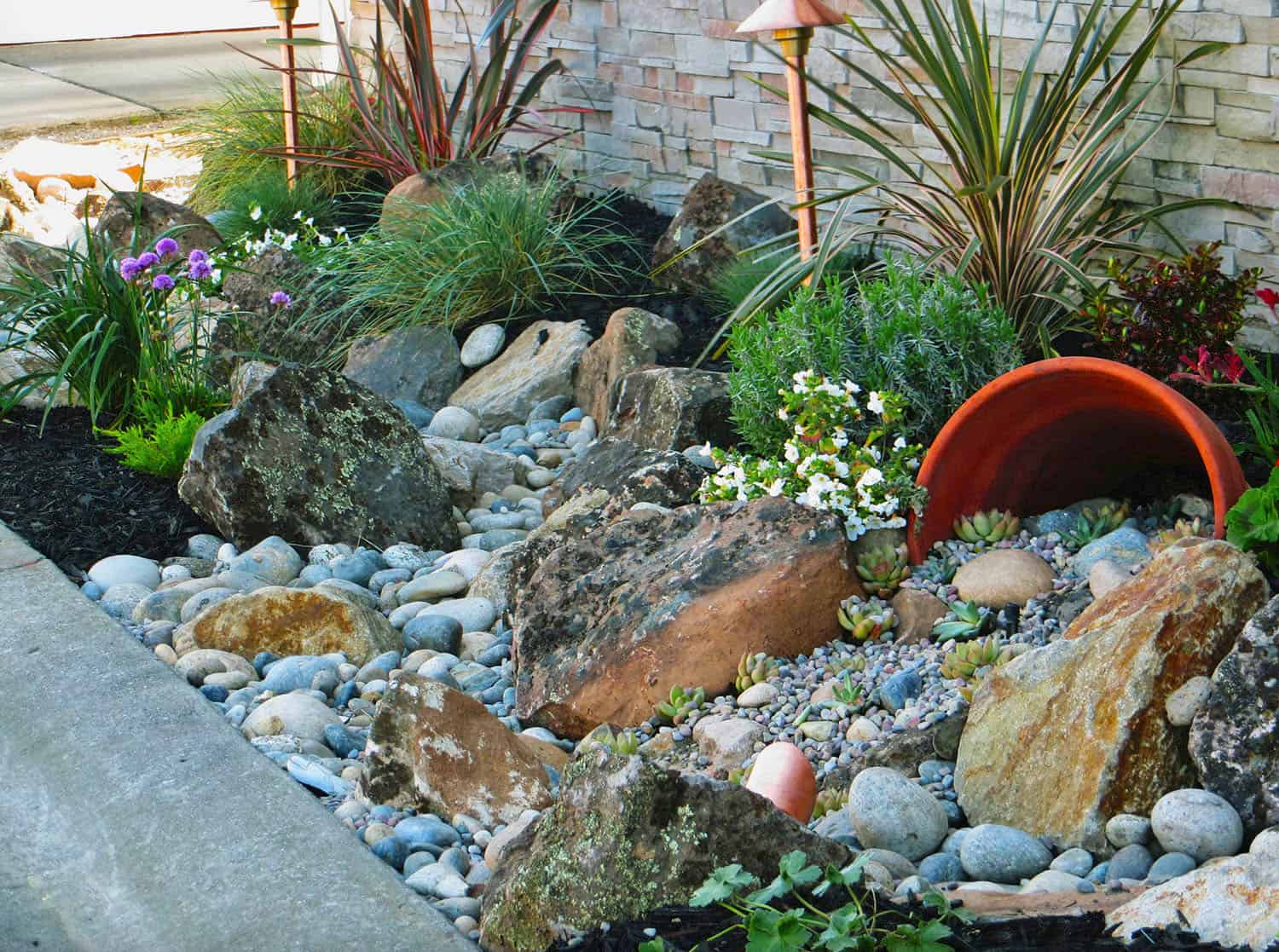
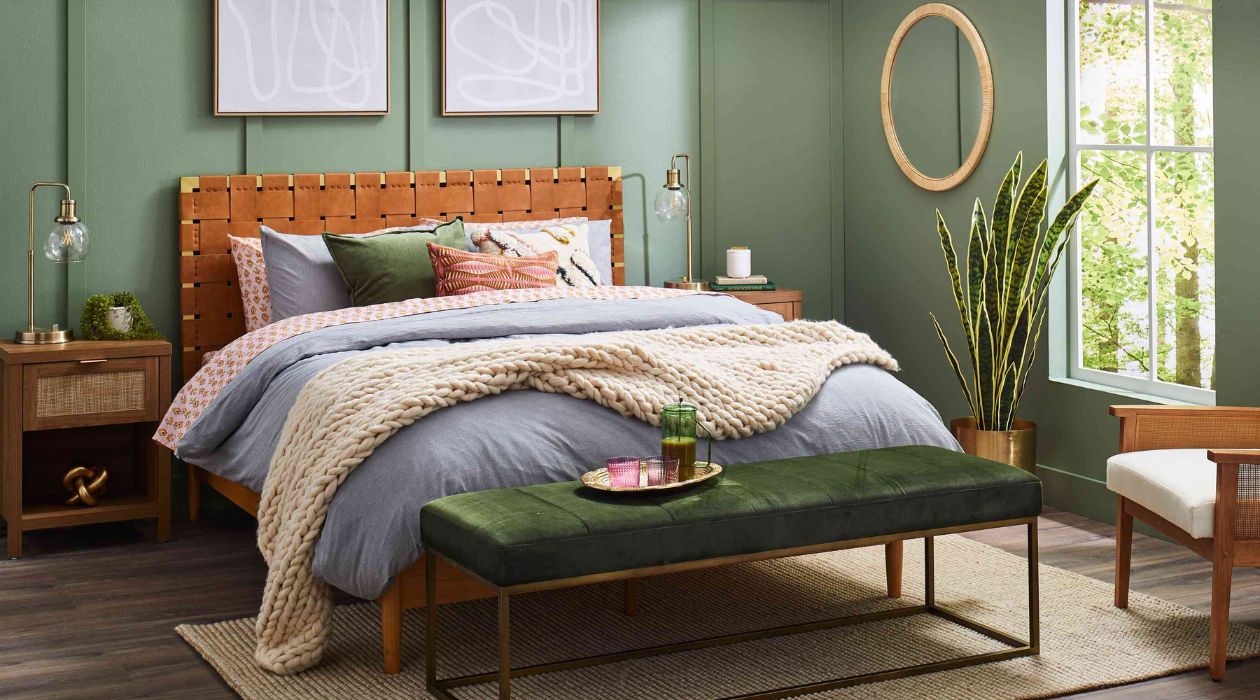
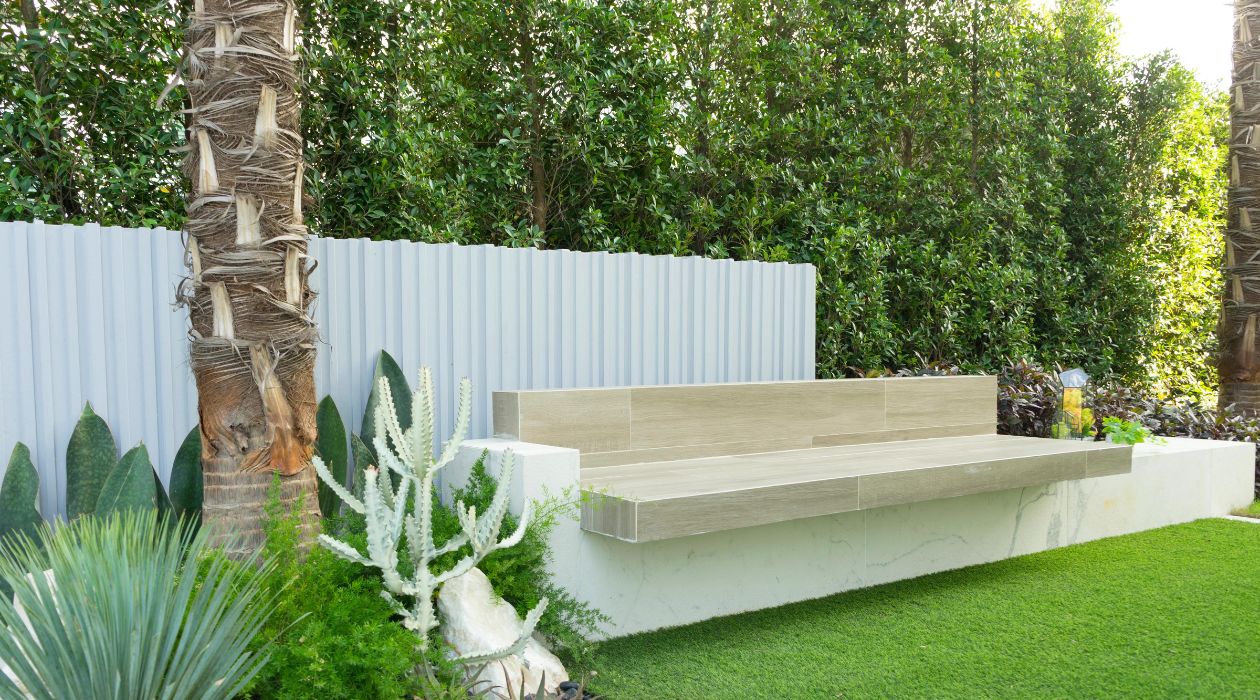
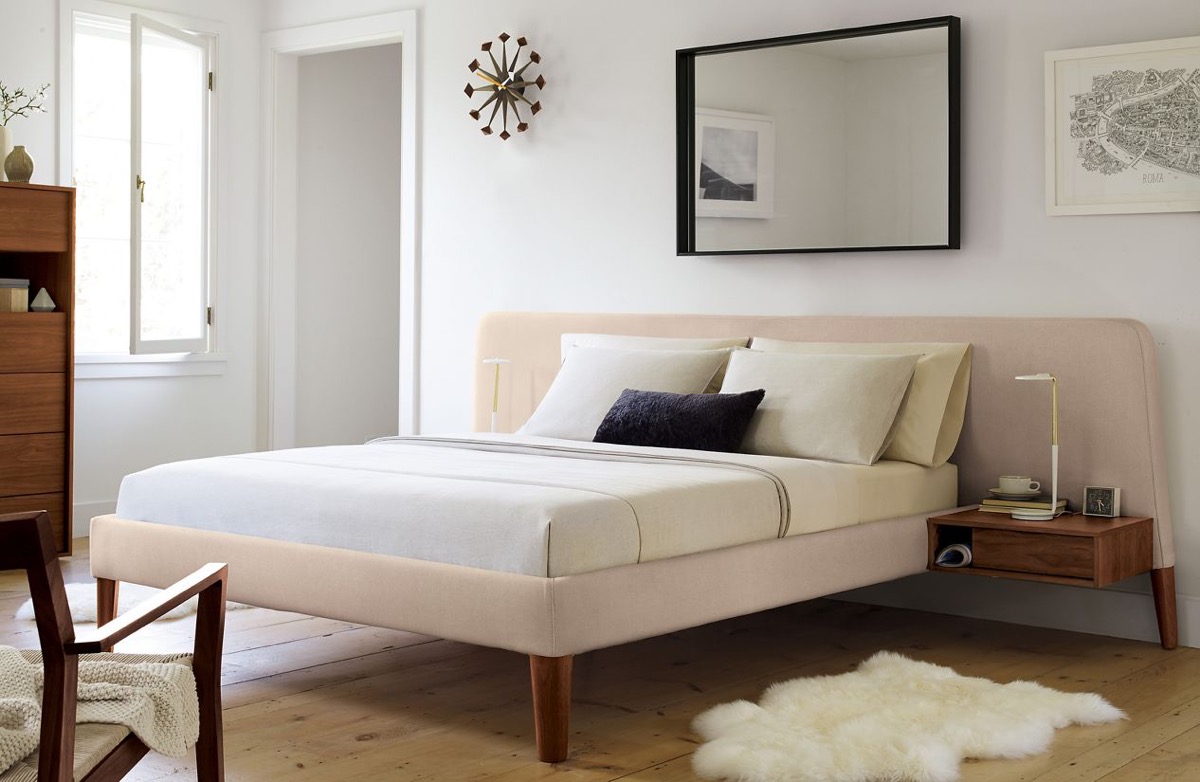
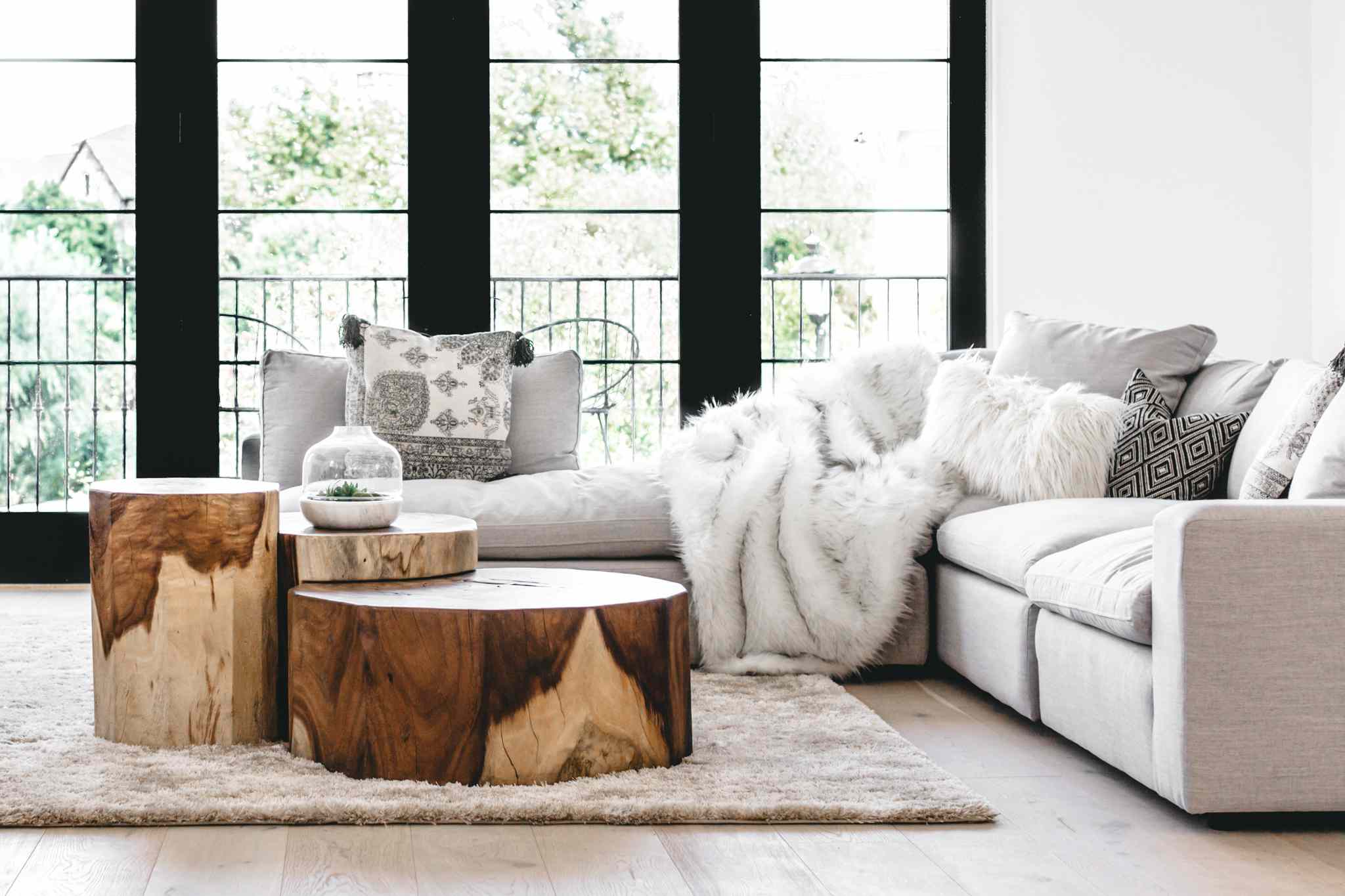
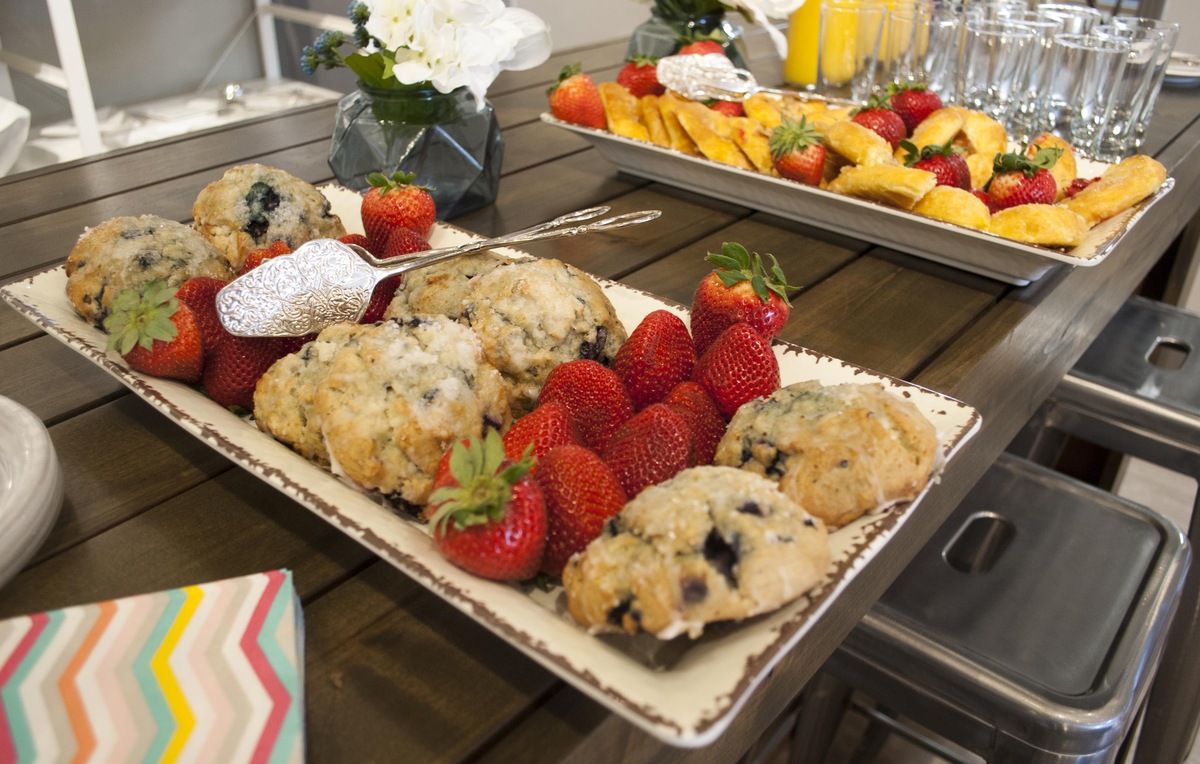

0 thoughts on “Flower Bed Ideas: Beautiful Ways To Create Floral Displays”